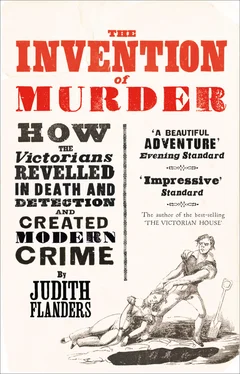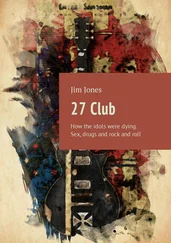The following year, the police distinguished themselves even less, demonstrating the limitations of preventative policing. This time it was not the murder of a friendly drunk, but of a respectable member of the merchant class. Thomas Ashton, the twenty-two-year-old son of a mill owner, had left the family house at Gee Cross, near Ashton-under-Lyne (now part of Greater Manchester), at 7.30 one evening in 1834 to deputize for his brother at their father’s Apethorne factory (Ashton usually managed another family mill, at Woodley). Minutes later, a messenger from the mill rushed in: ‘He believed Mr. Thomas was down in the lane, and hurt.’ Mr Thomas was not hurt, but either dying or dead, having been shot at point-blank range. At the inquest, a nine-year-old girl said that she had seen three men on the road, and thought one of them had been carrying a gun, which he tried to conceal as she passed. A book-keeper from the mill testified that three men had been sacked the week before, ‘for irregularity in their general conduct’, but none of them was known to have made any threats against any of the Ashton family, and one had already been rehired. This was a time of great labour unrest, and there was some discussion about whether the men had belonged to the Spinners’ Union, but no evidence was offered, and in any case the Ashton mills were in full employment. Mention was made of a ‘piece of thin and soft blue or purple paper’ which had probably been used as wadding in the gun that was fired, but this clue seemed to lead nowhere. The jury brought in a verdict of ‘wilful murder against three persons at present unknown’, and the government offered a £600 reward.
The Manchester Guardian said that the perpetrators must have been outsiders: not only had no one recognized them, but they had made no attempt to hide their faces, as though they had no fear of recognition. The case remained in limbo for three years, until William (or James, depending on which newspaper you read) Garside, in gaol for stealing tools, told the authorities that he knew something about the murder. He refused to speak to the magistrate, however, until a three-year-old copy of the Hue and Cry *was found, to prove to him that the government was offering a reward (now raised to £1,500) and a pardon to anyone except the person who had actually fired the gun who could give information leading to the discovery of the murderers. Garside could not read, but the offer was read aloud to him. As a result he admitted to being present at the crime, and named two brothers, Joseph and William Moseley, as the perpetrators.
All three were committed for trial. Although the newspaper reports are not explicit, it looks as though William Moseley turned king’s evidence and testified against the other two. Joseph Moseley and Garside were committed for murder, William Moseley for aiding and assisting. Each of them blamed the others. William Moseley said he had been looking for employment near Macclesfield when he met a man named Stanfield or Schofield, who was with Garside and Joseph Moseley. The three men talked, and William said he caught the words ‘the union’. Garside and Joseph then told him that they had agreed to shoot one of the Ashtons, ‘because of the turn-outs’ (strikes), and they would be paid £10 for the murder. He said they signed a book, and he made his mark. ‘We then all went down on our knees, and holding a knife one over the other, said. “We wished God might strike us dead if we ever told.” ‘ Garside said Joseph Moseley was the one who fired the gun, while Joseph Moseley, who had no legal representation, simply said that his brother William had committed ‘many crimes’, while Garside would swear to anything for the price of a drink. As to himself, ‘It is not likely that he should shoot a man that he never saw or knew any ill of.’ This was his only defence. The jury took a few minutes to decide that Garside was the actual murderer, but that Joseph Moseley was equally guilty. They were sentenced to hang. William was found guilty as an accessory, but later reprieved.
The resolution of this three-year-old crime caused a sensation among all classes and types. The Stockport Advertiser couldn’t keep up with demand, and was driven to produce single sheets of the trial transcript. It was anti-climactic, therefore, when the executions were delayed into the following year, after legal wranglings over jurisdiction. Thus, while the Manchester Guardian dedicated nearly 27,000 words to the trial, by the time the two men were finally executed it was no longer topical, and the paper did not cover it at all.
This sad little case would merit no more than a mention in a history of labour unrest, were it not for two works of literature that it spawned. As a preliminary, however, in 1842 came a novel that in no way qualifies as literature. William Langshawe, the Cotton Lord was written by the daughter of the owner of the Manchester Chronicle, whose previous work, the title page advertised, was The Art of Needlework. The book reads pretty much as one would expect from the authoress of The Art of Needlework. Although set among the cotton mills, William Langshawe has a heroine who dresses in ‘a gossamer robe of spotless white’, a hermit with a secret sorrow (of the sort so often seen in the industrial heartlands) and the occasional outbreak of Italian banditti. The important thing about the book for our purposes is that there is a millhand named Jem, who loves another millworker, Nancy, who has ideas above her station and is conducting a flirtation with the son of a factory owner. Jem, in his anguish, turns to ‘The Union’, a fearful organization that plans turn-outs in order to reduce ‘beneficent and liberal masters. to the very edge of ruin’. Twenty pages before the end a factory owner’s son sets off for his mill, shortly after which ‘a sudden knock was heard at the hall door’, and, just as with Thomas Ashton, a messenger comes in to say, ‘I’m afeard he is down in the loan [sic], much hurt.’ The young man is ‘borne in by the men – a corpse’, while ‘not a clue, not the remotest trace of the villains remained’. There is a footnote: ‘Let not my readers image [sic] that this awful incident has been invented. A few years ago a young cotton manufacturer of the highest respectability, and most excellent character, was murdered even so, and as suddenly, as we have described, by order of the Spinners’ Union.’
That readers could have forgotten the Ashton case was confirmed in 1848, with the publication of one of the great works of nineteenth-century fiction. Mrs Gaskell’s Mary Barton used the incidents of the case, but while many reviewers commented on her fictional interweaving of the realities of industrial unrest and the battles between the owners and the workers, none seems to have recognized the origin of her story. In Mary Barton, Mary, a milliner’s assistant, is loved by Jem Wilson, a factory mechanic. She initially rejects him in favour of Harry Carson, the son of the local mill owner, although she soon realizes she loves Jem and breaks off with Carson. He and Jem fight, and are stopped by a policeman, in whose hearing Jem threatens Carson. Meanwhile, the millworkers are striking. Mary’s father, John Barton, takes part in a plan to murder one of the owners, for which lots are drawn. John Barton goes to Glasgow to talk to the workers there; Jem simultaneously agrees to accompany his cousin Will Wilson on the walk back to his ship in Liverpool. That night, Harry Carson is found shot dead in the lane. The gun is identified as Jem’s, and he is arrested. The wadding from the gun is found by Mary’s aunt. It is part of a valentine Jem sent Mary, but Mary alone knows this is evidence of his innocence, and her father’s guilt – she had given the paper to her father. *She sets out for Liverpool to get Will to return and testify to Jem’s alibi, the only way to save Jem without endangering her father. Will’s ship has left, and Mary goes out in a small boat, shouting up to him that he is needed. His captain refuses to give him leave, but Will arrives to give his evidence in the nick of time, Jem is saved and Mary declares her love for him. John Barton, now dying, confesses to Carson’s father, who forgives him.
Читать дальше












